Passerines
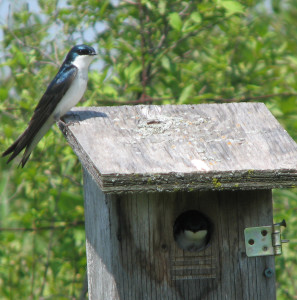
Tree Swallows (Tachycineta bicolor)

Tree swallows are a member of a group of birds known as aerial insectivores that are declining more rapidly than any other group of birds in North America. Through the monitoring of a wild population in southern Ontario, we investigate the links between habitat quality, physiology, and fitness to understand the mechanisms that may be influencing population declines. In addition, we use this species as a model to investigate the applicability of stress hormone levels as biomarkers of population condition.
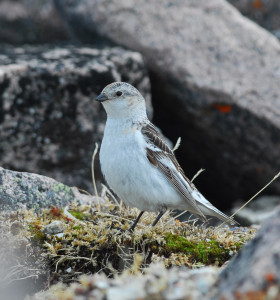
Snow buntings (Plectrophenax nivalis)

Snow buntings are a circumpolar Arctic-breeding songbird that has declined by an estimated 60% in North America over the past 45 years. We are combining studies of their breeding, migratory and wintering biology to determine the mechanisms behind these declines. We monitor breeding and migratory activities using a focal population at East bay island studied since 2007, and we have developed a large network of academic and citizen scientists (Canadian Snow Bunting Network – CSBN) to monitor the wintering behaviour of this species across southern Canada and the northern US.
Seaducks
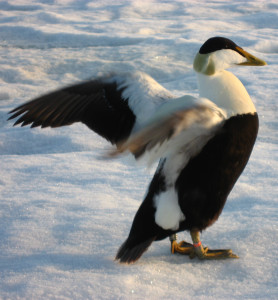
Common eiders (Somateria mollissima)

Research on eiders form the core Arctic-breeding study system in our lab. We work with Dr. Grant Gilchrist (Environment Canada) and several other academic teams and Northern communities to study the breeding biology, behavioural ecology and physiology of Canada’s largest Arctic-breeding colony located on East bay island, Nunavut. We examine the interacting mechanisms linking multiple emerging stressors (e.g., hunting, disease, climate change, industrial shipping, bear predation), individual fitness and population health in this system as a model for the overall health of seabird colonies across the Canadian low Arctic.
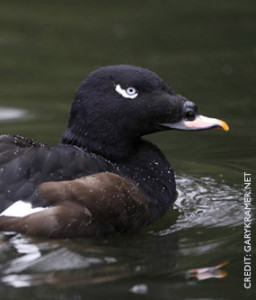
White-winged scoters (Melanitta deglandi)

We are refining the mechanistic approaches and predictions developed in our free-living eider work using physiological manipulations in a captive population of scoters maintained at the Patuxent Wildlife Research Center (PWRC) in Laurel, Maryland. In collaboration with Dr. Alicia Berlin we are examining the role of stress hormones in foraging and fattening in this diving seaduck to better understand the mechanisms linking individual flexibility in physiology with fitness in free-living seaducks.
Seabirds
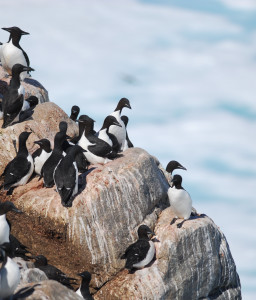
Thick-billed murre or Brünnich’s guillemot (Uria lomvia)

Our comparative work on colonial-nesting murres is possible through collaborations with Drs. Grant Gilchrist and Sebastien Descamps at colonies in Nunavut, Canada (low Arctic) and Svalbard, Norway (high Arctic), respectively. We are examining whether within-individual plasticity allows certain individuals to maximize fitness in the face of rapid environmental change. To do this we are combining variation in foraging behaviour from GPS and dive recorders with measures of stress and energetic physiology to determine whether some individuals are better than others at responding to changes in ice cover and resource availability.
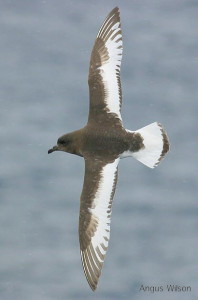
Antarctic petrels (Thalassoica antarctica)

In collaboration with a diverse and international research team led by Dr. Sebastien Descamps of the Norwegian Polar Institute, we are helping to examine the role of individual variation in the capacity to respond to rapid environmental change in this model, ice-edge-dependent Antarctic seabird. Specifically, our team is using a within-individual, repeated-measures approach to determine whether individual variation in glucocorticoid physiology predicts foraging complexity (measured via fine-scale GPS units), foraging success (measured via plasma energetic metabolites) and fitness (chick growth and survival) within a rapidly-changing ice-edge-driven environment.
Aquatic Systems
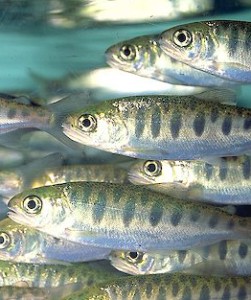
Chinook salmon (Oncorhynchus tshawytscha)
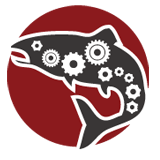
Pacific salmon (Oncorhynchus spp.), found along the western coast of North America from Central California to Alaska, have integral roles in ecosystem vitality, indigenous culture and natural resource economics. As adults, Pacific salmon undergo challenging spawning migrations encountering numerous ecological (e.g. predators, fluctuating water flow) and anthropogenic stressors (e.g. warming water temperatures, fisheries capture and release). In collaboration with Yellow Island Aquaculture Ltd. (YIAL), an organic Chinook salmon farm located on Quadra Island (British Columbia), we are studying how maternal stress affects gametic traits and offspring physiology and behaviour in order to link maternal condition and environment with fitness. The facilities at YIAL allow us to follow salmon from egg to adult, and repeatedly test physiological and behavioural parameters across life-history stages in semi-natural environments.
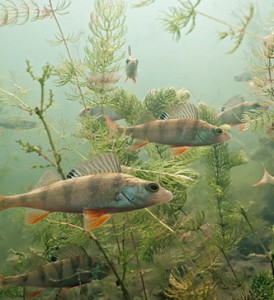
Great Lakes Aquatic Species

Aquatic environmental research is extremely strong at the University of Windsor, led by multiple researchers at the Great Lakes Institute for Environmental Research (GLIER) and the Department of Biological Sciences. The Love Lab is collaborating with a number of these research groups to add physiological mechanisms to their already highly integrative projects. Examples of this work include the hormonal basis for behavioural phenotypes in Yellow perch and Atlantic salmon with Dr. Christina Semeniuk (GLIER), stress-mediated mechanisms of invasion success in round gobies with Dr. Daniel Heath (GLIER), the reproductive physiology of round gobies with Dr. Dennis Higgs (Biological Sciences) and the reproductive physiology of Chinook salmon introduced into Lake Ontario with Dr. Trevor Pitcher (Biological Sciences). Upcoming work will include the measurement of the yolk precursor Vitellogenin (VTG) to assess both reproductive state and expsoure to xenoestrogens in the Great Lakes basin.



